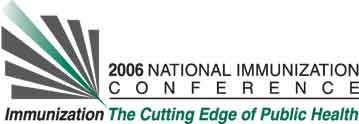Ismael R. Ortega-Sanchez, National Immunization Program, ESD, OD, Center for Disease Control, 1600 Corporate Square Boulevard, M/S E-61, Atlanta, GA, USA and Noelle-Angelique Molinari, NIP/HSREB, CDC, 1600 Clifton Road, NE, MS-E52, Atlanta, GA, USA.
Learning Objectives for this Presentation:
By the end of the presentation participants will be able to understand the economics of increasing influenza immunization.
Background:
Severity and mortality associated with Influenza have remained significantly high despite vaccination efforts: about 36,000 deaths and 200,000 hospitalizations are annually attributable to influenza in the US. More effective and extensive vaccination strategies leading to a universal annual vaccination are under consideration. Yet, no comprehensive analysis of their prospective cost and benefits is available.
Objectives:
To estimate benefits and costs of increasing influenza immunization strategies in the US using societal and payers' perspectives.
Methods:
A probabilistic model is built for a US age- and influenza-disease-risk representative population sample to analyze the health and economic impact of strategies increasing actual vaccination coverage and effectiveness. Data on disease burden and resource utilization attributable to outpatient care, hospitalizations and deaths in annual epidemics is used, as are incidence data of comorbid conditions and productivity impact. Scenarios with increasing vaccination are also simulated using Monte Carlo algorithms. Among them, projected vaccine effectiveness and hypothetical herd immunity impacts in the unvaccinated are considered. Sensitivity analyses are also conducted with projections to the US population.
Results:
After including vaccination costs and performing simulation analyses this study provides estimated ranges for health outcomes and resource utilization, estimates the potential health impact and cost value of possible vaccination strategies, assesses the dollar value of prospective vaccination strategies, and evaluates criteria to expand vaccination across age and risk groups. Although with various uncertainties and data limitations, phasing vaccination in certain groups have sizable differences in health impacts and economic returns.
Conclusions:
Determine the maximum benefits of expanding vaccination would depend on the measurement criteria (e.g., deaths prevented, indirect protection or economic returns). It would also depend on achieving and sustaining minimum vaccination coverage for herd immunity protection, and on improving vaccine implementation and demand.
See more of Posters
See more of The 40th National Immunization Conference (NIC)

